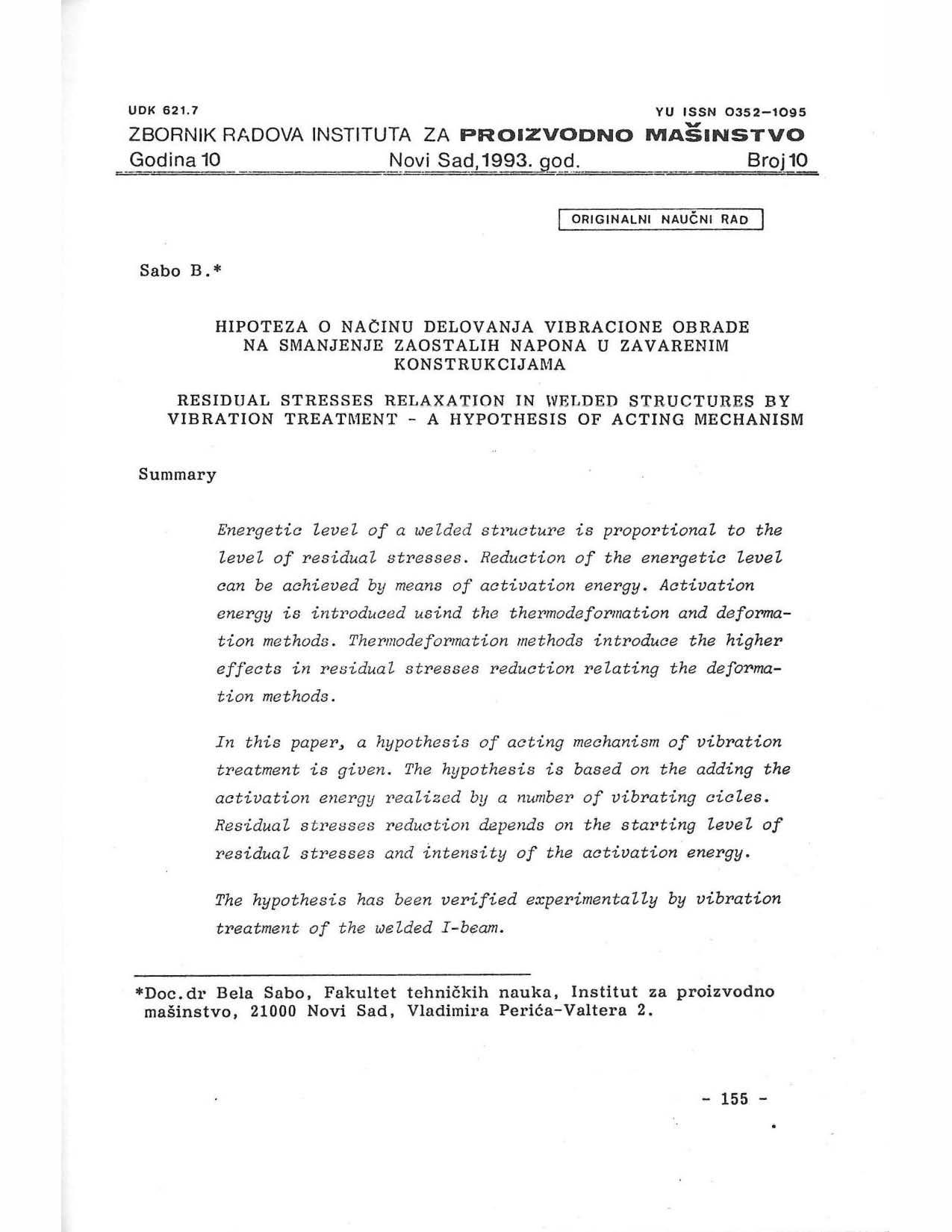Residual stresses relaxation in welded structures by vibration treatment - a hypothesis of acting mechanism

Published 1993-12-01
abstract views: 11 // FULL TEXT ARTICLE (PDF): 8
Keywords
- welded structure,
- residual stresses,
- activation energy
How to Cite
Copyright (c) 2023 Journal of Production Engineering

This work is licensed under a Creative Commons Attribution 4.0 International License.
Abstract
The energy level of a welded structure is directly proportional to the level of residual stresses. Reducing this energy level can be accomplished through the application of activation energy. Activation energy is introduced using both thermodeformation and deformation methods, with thermodeformation methods yielding more significant effects in the reduction of residual stresses compared to deformation methods. This paper presents a hypothesis regarding the underlying mechanism of vibration treatment. The hypothesis is based on the introduction of activation energy achieved through the action of a multitude of vibrating particles. The extent of reduction in residual stresses depends on the initial level of residual stresses and the intensity of the activation energy applied. The hypothesis has been experimentally verified through the vibration treatment of a welded I-beam.

